CRITERIA
Our judges evaluated Hot List candidates in four areas.
- Performance ( 45%)
The utility of a product, or what happens to the ball when it’s struck by the club. - Innovation ( 30%)
How a club’s technology, including custom-fitting, advances the category. - Look/Sound/Feel ( 20%)
What the golfer experiences before, during and after impact. - Demand ( 5%)
The relative interest in a product and its reputation.
All judging is based on a 100-point scale.
97-100 ★★★★★
88-96 ★★★★
70-87 ★★★
51-69 ★★
≤50 ★
(L) Low-Handicapper | (M) Mid-Handicapper | (H) High-Handicapper
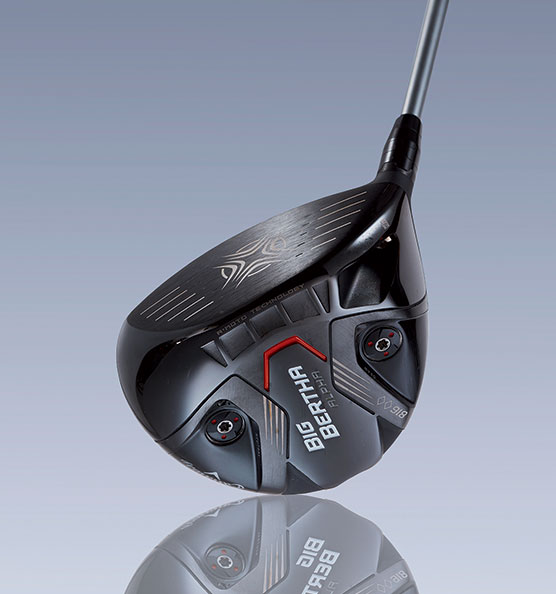
CALLAWAY
BIG BERTHA ALPHA 816 υυ
Performance ★★★★★
Innovation ★★★★ ½
Look / sound / feel ★★★★★
Demand ★★★
VERDICT Some drivers allow you to make small tweaks that better players like. That’s what’s going on here, especially with the two positions for the weighted cylinder that the company calls a gravity core. Better players tend to have a consistent impact location, so the gravity core can be placed to line up with that area. The cylinder goes in the heel or toe for a draw or fade, and it can be flipped with the heavy side up or down to match your contact sweet spot. For each loft setting, that’s four ball flights across a tight range (because good players want small changes, not 20m of draw bias). Get the settings right, and you’ll get your preferred shot shape and maximum energy transfer.
COMMENTS (L) The shape is unassuming. It felt soft but fast at the same time. (M) It’s definitely a better player’s driver, but it has just enough forgiveness. The adjustability is simple and effective.

CALLAWAY
GREAT BIG BERTHA
Performance ★★★★★
Innovation ★★★★★
Look / sound / feel ★★★★½
Demand ★★★★
VERDICT Most golfers aren’t very good at getting the most from their tee shots. This driver is designed to improve three things golfers struggle with: ball speed, launch angle and direction. First, a thin, lightweight face keeps mis-hits from losing too much speed. Second, the lightweight construction, including a composite crown, keeps the centre of gravity low to help shots launch with less spin. The head also accommodates 19 custom shafts as light as 40 grams to maximise clubhead speed. Third, a sliding 10.5-gram weight in an aerodynamic channel in back makes left or right misses more playable.
COMMENTS (L) I like the matte black. You don’t have to be a tech expert to figure out the adjustability. (M) Nice, powerful ting. Lets you know you got ahold of it. Power, even on less-than-stellar swings. (H) The whole club felt hot, with narrow dispersion.
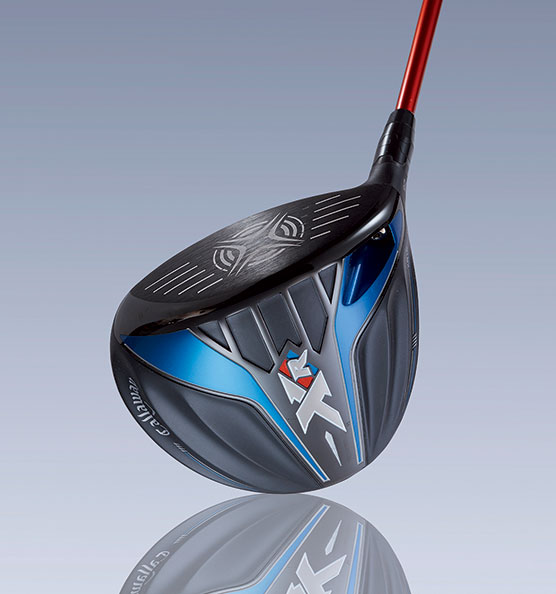
CALLAWAY
XR16/PRO
Performance ★★★★★
Innovation ★★★★
Look / sound / feel ★★★★
Demand ★★★★ ½
VERDICT Most golfers need more speed and forgiveness from their drivers, but the trouble is, those two things often work against each other. A big clubhead with a forgiving face can be harder to swing fast because its shape is aerodynamically inefficient. Callaway worked with Boeing to improve the way the XR16 moves through the air. The step feature on the crown helps reduce aerodynamic drag. But designers didn’t skimp on forgiveness. The lightweight titanium alloy in the body means more weight can be repurposed for a low centre of gravity and stability on off-centre hits. The shallow face is also lighter and thinner than last year to improve flex (speed) and save more weight (forgiveness).
COMMENTS (L) The Pro version’s clean, compact head looks like a mean tank at address. (M) The forgiveness factor is high. Aggressive ball flight and a lot of run. (H) The right metal sound, not harsh, not weak.

COBRA
KING F6
Performance ★★★★ ½
Innovation ★★★★ ½
Look / sound / feel ★★★★ ½
Demand ★★★
VERDICT We know that drivers with an address profile this large are doing everything they can to emphasise forgiveness. Thanks to selective use of a lightweight titanium alloy in the face and crown, the F6 gets that idea right. It’s got the highest stability on off-centre hits in the Cobra family (and one of the highest in the game). Its large size also makes room for a greater difference in its two adjustable-weight settings. Flipping the heavier, 10-gram weight to the back will help you hit it higher, and leaving it in the front will produce a flatter flight with less spin. The result is two ball flights for each of the eight loft settings on the adjustable hosel.
COMMENTS (L) The white line on the crown sets me up square. (M) Just enough crack mixed with a thud. Some guts in the middle. (H) With the weight back, everything launched nice and easy.
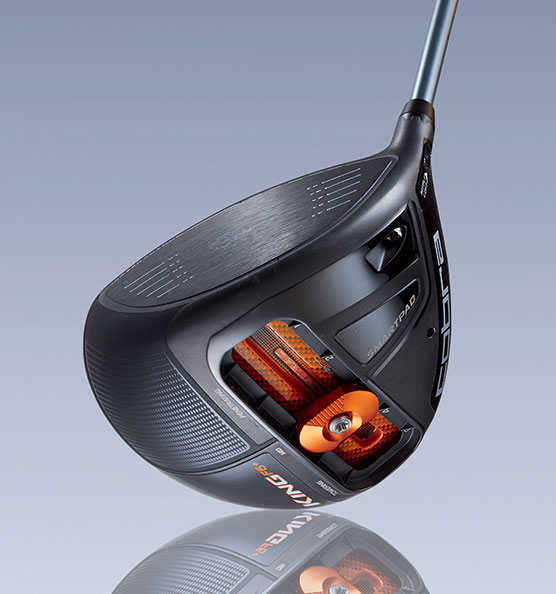
COBRA
KING F6+/PRO
Performance ★★★★ ½
Innovation ★★★★ ½
Look / sound / feel ★★★★
Demand ★★ ½
VERDICT The problem with making a driver with adjustable weights is, well, weight. Movable weights require receptacles that can reduce the amount of weight you can move around. Cobra addressed this by making the slider channel out of lightweight carbon fibre. Consequently, there’s more weight in the sliding chip (18 grams) for more adjustability and a lower centre of gravity for less spin and better energy transfer. A carbon-composite crown and a lighter, titanium-alloy body saved mass to further stabilise the head. Altogether, the savings yield a driver with five settings at each of its eight adjustable lofts – or 40 drivers in one.
COMMENTS (L) I could swing harder, and it didn’t make it spin more. (M) If I pushed the weight forward in the track, it did exactly what the label said: a low, penetrating bullet. (H) The sound is slightly muted. With the weight back, my shots carried nicely.
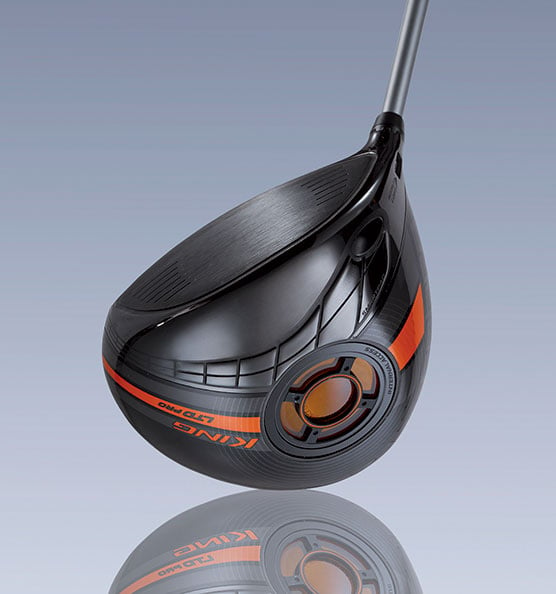
COBRA
KING LTD/PRO
Performance ★★★★ ½
Innovation ★★★★ ½
Look / sound / feel ★★★★★
Demand ★★ ½
VERDICT The technology in this classic-looking shape is under the hood. And that’s not just because there’s a port in the sole that lets you look inside. The cool part here is a centre of gravity that’s nearly in line with the centre of the face, something many in the industry have been chasing for a long time. Why? Because lining those two up results in shots that have the highest energy transfer with the least spin – fundamental to longer drives. Because the crown is made of a lightweight aerospace carbon composite (think International Space Station), the saved weight creates extra stability.
COMMENTS (L) A consistent performer whether I swung hard or just wanted to hit a straight bullet. (M) A soft yet energetic sound. You don’t have to have a high swing speed to hit it well. (H) Nice, solid thwack. Felt light, effortless.
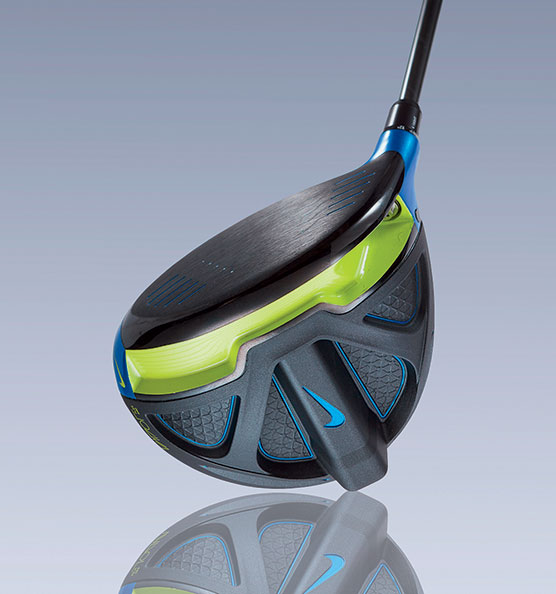
NIKE
VAPOR FLEX 440
Performance ★★★★ ½
Innovation ★★★★ ½
Look / sound / feel ★★★★
Demand ★★
VERDICT If the benefits of saving weight are so great (and they certainly can be), why use titanium if you don’t have to? That’s what’s going on here with the unique body structure behind the titanium face. More than 60 per cent of the clubhead is made of a light but strong carbon fibre reinforced with the resin polymer used in Nike’s golf balls. Because it’s one-third the density of titanium, the body saves mass to allow room for an adjustable weight slug that shifts the centre of gravity from front to back to alter launch angle and spin (higher launch with the heavy end in back, lower spin with the heavy end in front). It also frees up the design for a taller face and a thinner, more consistently flexible sole channel. All of this makes the driver more forgiving with less spin.
COMMENTS (L) The two-tone helped alignment. You really have to hit this starting in third gear and let it rip. (M) No excessive noise, a pure transfer of power.
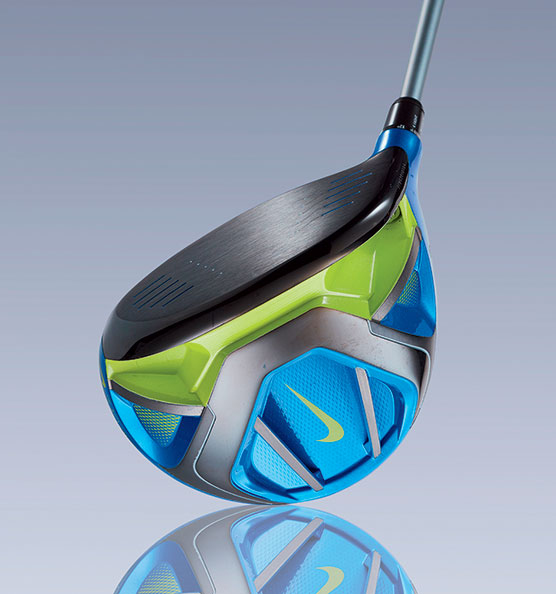
NIKE
VAPOR FLY/PRO
Performance ★★★★ ½
Innovation ★★★★
Look / sound / feel ★★★★
Demand ★★ ½
VERDICT An all-titanium driver might not sound sexy these days, but Nike makes the case with these two models that combine flexibility in the face with stability in the body. The key improvement from last year’s model is a thinner crown. The saved weight is relocated lower in the head so shots launch with less spin. Helping the entire face flex more on both models is the company’s trademark sole-channel feature. The wall has been thinned to less than a millimetre so mis-hits lose less distance. But all that face flexing is made possible by a more stable back side. External beams and a deep sole cavity allow a better energy transfer to the ball.
COMMENTS (L) I like the deep face. It looks forgiving. Sounded like a muted explosion. (M) Shocked at how stable the flight was, like the ball had a gyroscope in it. (H) The head shape frames the ball just about perfectly.
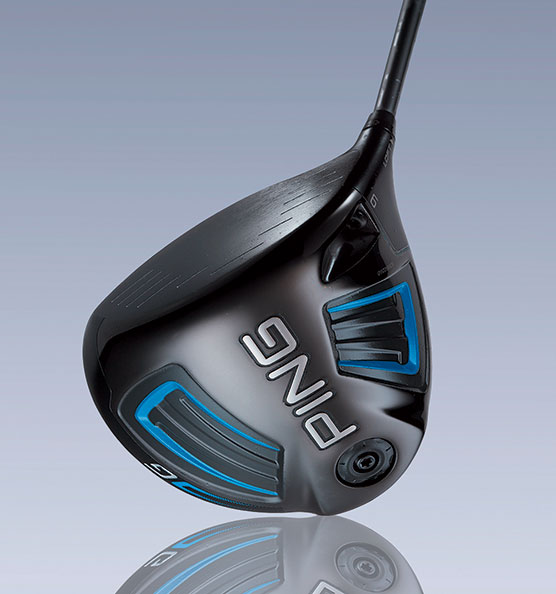
PING
G/LS TEC/SF TEC
Performance ★★★★ ½
Innovation ★★★★ ½
Look / sound / feel ★★★★
Demand ★★★★★
VERDICT Ping successfully developed the idea that large, forgiving drivers like its new G line don’t have to come with an aerodynamic liability. But what does that mean? Ping engineers say its latest 460-cubic-centimetre behemoths glide through the air almost as if they were 3-woods. Ping accomplishes this by using aggressive ridges (turbulators) on the crown, sole shaping and a trailing-edge cavity that reduces oscillation as the club approaches the ball. What’s not shrinking is forgiveness. The depressions on the back of the crown make the structure thinner. This allows Ping to use more mass low and deep for the most stable clubheads in company history. Besides the G, the line features the low-spin LS Tec and the slice-fighting SF Tec.
COMMENTS (L) Love the matte black. Consistent sound and feel. (M) No bad vibrations at all. Forgiving. (H) Not crazy loud, but not quiet. Ball flight is higher but still penetrating.
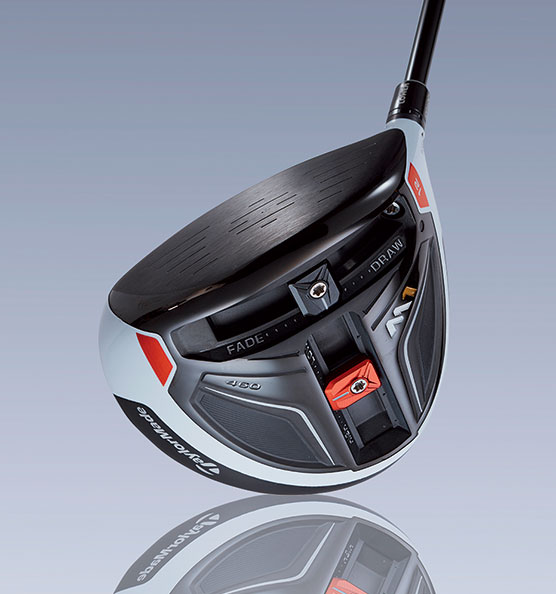
TAYLORMADE
M1
Performance ★★★★★
Innovation ★★★★★
Look / sound / feel ★★★★★
Demand ★★★★★
VERDICT The carbon-fibre crown exudes a secret-agent kind of cool, but what’s particularly cool is how that lightweight structure fortifies the club’s undercarriage. The saved weight makes room for two sliding weights in a pair of T-shape tracks on the sole. Those sliders let you independently tweak ball flight high or low and left or right. But you’re not done. The adjustable hosel lets you alter the loft angle by plus or minus 2 degrees across 12 positions. Altogether, you have a head that provides nearly 2,500 potential settings. And that sloping, aerodynamically sleek crown is the key to a lower centre of gravity for less spin and better energy transfer at impact.
COMMENTS (L) It’s like you’re swinging a light cement block – but in a good way. It’s a high, no-spin monster, especially after you tune it. (M) Its performance matches its look: very high tech, very James Bond. (H) The two-tone and the notch help alignment.

TAYLORMADE
M2
Performance ★★★★ ½
Innovation ★★★★
Look / sound / feel ★★★★ ½
Demand ★★★★
VERDICT In the world of drivers, there are clubs designed to enhance our excellence, and there are clubs that love us like a grandmother despite our flaws. The M2 leaps happily into the latter category. Built with a more forgiving, stable head than the M1, the M2 takes the weight saved from its carbon-composite crown and distributes it towards the back of the club so mis-hits don’t lose too much distance. Extra stability is nice, but we also need help on those thin shots. That deep, narrow channel in the sole makes those misses launch with more speed, more height and less spin. And when we can’t find the right loft, its hosel adjusts up or down 2 degrees.
COMMENTS (L) The shape and the colours inspire confidence. (M) I could swing as hard as I wanted. (H) A lively, clean clack, not mushy, more favourable than other carbon-fibre heads.
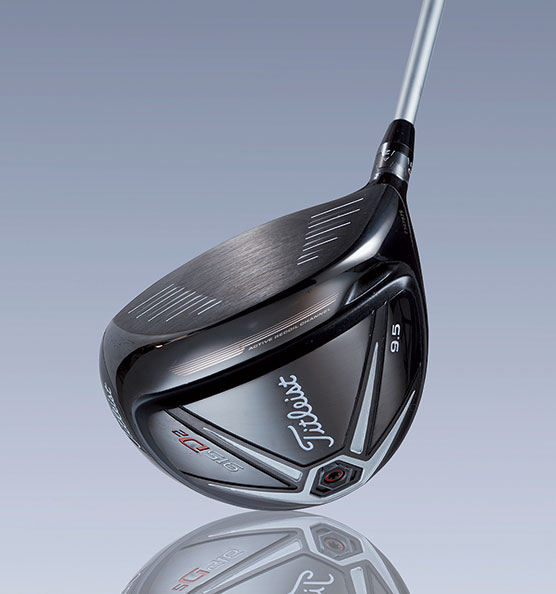
TITLEIST
915D2/D3
Performance ★★★★ ½
Innovation ★★★★ ½
Look / sound / feel ★★★★ ½
Demand ★★★★
VERDICT The 915’s classic shape masks sophisticated technology. It starts with the obvious, though. The wide, deep and long channel running across the sole enhances the flexing of the face in a uniform way, allowing the crown and sole to give simultaneously at impact. That consistent flexing also allows shots to launch with less spin. Less obvious is the way its lightweight, variably thick face yields better perimeter weighting for a more stable head. Extra weight deep in the sole and toe means less-than-perfect hits end up flying closer to perfect. With two head styles and its 16-way adjustable hosel that tweaks lie angle and loft independently, it’s the most accommodating Titleist driver ever.
COMMENTS (L) More on the workable side than the raw distance side. But not lacking in performance. (M) A lively sound off the face. Interesting that I hit longer shots with a driver shorter in shaft length.

MIZUNO
JPX EZ
Performance ★★★★
Innovation ★★★★½
Look / sound / feel ★★★ ½
Demand ★★
VERDICT When it comes to forgiveness, companies typically focus on keeping off-centre hits from losing distance, or they try to minimise left or right misses. Doing both in one clubhead can be a challenge, but Mizuno answers the call with a large-profile design that has an adjustable weight. The eight-way adjustable head stretches to more than 90 per cent of the USGA’s width and depth limits to inspire confidence at address and forgiveness on mis-hits.
A 10-gram weight chip fits into the heel or toe to reduce slices or hooks, or in the middle to boost stability on off-centre hits.
COMMENTS (L) I can see how it works for a person who has trouble getting the ball up. Not too much spin for the height. (M) A powerful blow. Feels like you really control the ball. (H) Simple adjustability, and the hosel isn’t bulky.

SRIXON
Z 355
Performance ★★★★
Innovation ★★★★
Look / sound / feel ★★★ ½
Demand ★
VERDICT Sometimes the most intriguing ideas are counterintuitive. This club seeks to improve your driving distance by making the clubhead heavier. This does two things: It boosts forgiveness and makes your swing more efficient. First, the extra weight in the head increases stability on extreme misses on the heel and toe. Second, the heavier head helps keep the club on plane during the downswing so your impacts are more consistent. Third, the heavier head builds momentum coming into the ball for maximum energy transfer. The final key is a lightweight shaft with a balance point closer to your hands for control.
COMMENTS (M) Got the right shape. Could use an alignment aid. When you hit it good, you feel it in a good way. (H) All-business looks. Sound a tad muted, but good and crisp.
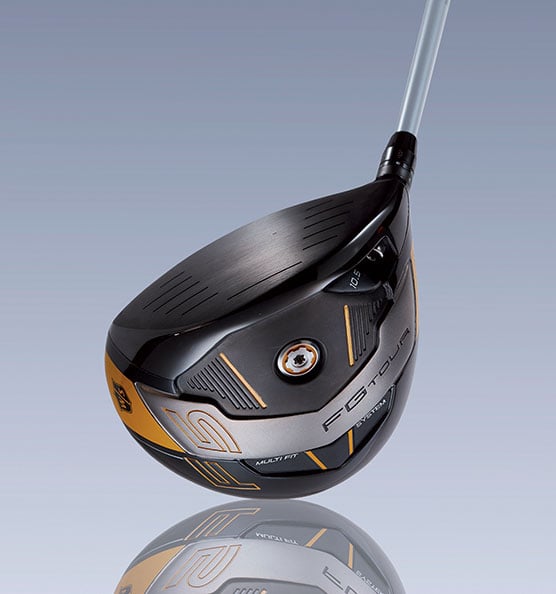
WILSON
FG TOUR F5
Performance ★★★★
Innovation ★★★★
Look / sound / feel ★★★
Demand ★★
VERDICT For better players, too much spin with the driver is no good. As little as 500 revolutions per minute extra spin can cost a fast-swing-speed player 10m or more. So Wilson addressed high spin by doing something simple: It shifted the weight in the sole forward. This lowers the centre of gravity to line up the meat of the club with the centre of the face. That means less spin, better energy and an optimal launch angle for more distance. Adjustable screws give you the option of putting as much as 11 grams in that weight port. Bonus: The sleek adjustable hosel works without removing the head from the shaft.
COMMENTS (L) Nice and compact; looks substantial. Feels good, consistent coming off the face. (M) A bit of a hollow sound, but the ball really jumps with very little spin.



